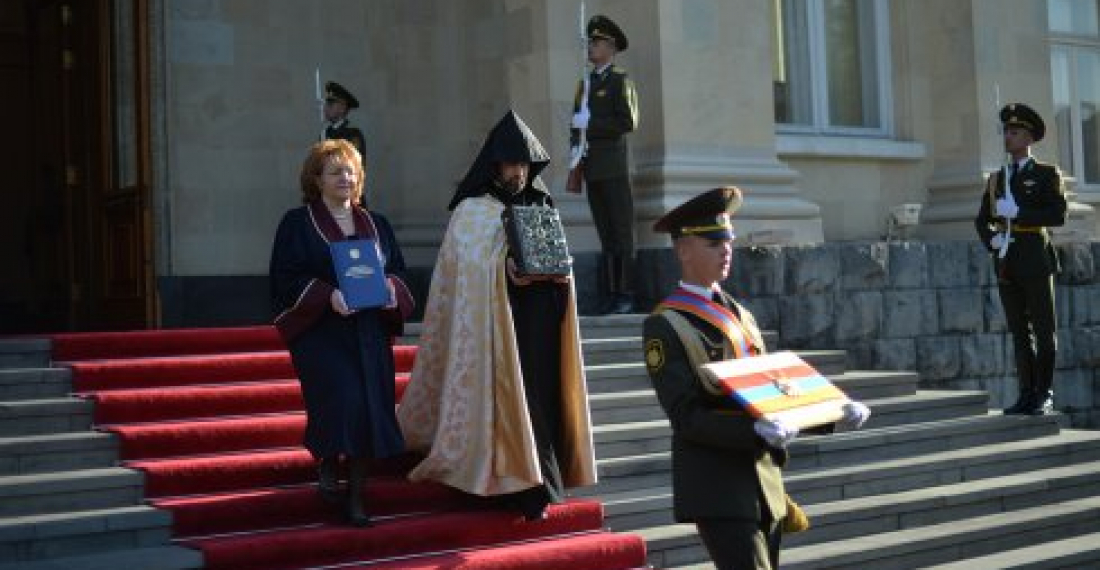The new President of Armenia, Armen Sarkissian, will shortly be sworn in as President of Armenia at a ceremony at the National Assembly. This will end the process of transition of Armenia from a semi presidential to a parliamentary republic. Armen Sarkissian will officially take office after the swearing-in ceremony
The three symbols of state, the original text of the constitution, a 7th century bible and the Armenian flag were moved in a symbolic ceremony from the presidential palace to the National Assembly building.
Thie swearing in will mark the end of the 10 year presidency of Serzh Sargsyan. It will also be followed by the resignation of Prime Minister Karen Karapetyan's Government.
Cabinet members will continue serving in office as acting-ministers until a new government is formed.
The term for nominating a candidate for Prime Minister is April 9-16, while the election will take place on April 17 in the Parliament of Armenia under an open voting.
The government will be formed within 15 days after a Prime Minister is appointed. The new Prime Minister will then recommend candidates for Vice-PMs and ministers to the President within five days. After this, the President within three days either appoints the Vice PMs and ministers or addresses the Constitutional Court.
The Constitutional Court examines the application and rules a judgment within five days. If the President does not fulfill the requirements under this article within three days, then the given Vice PM or minister is considered appointed by virtue of law.
Within 20 days after the government is formed, the Prime Minister will present the Government's Program to the Parliament.
related content: Opinion - The spectre of authoritarianismin Eurasia
source: commonspace.eu with agencies
photo: Ahead of the swearing in of a new president of Armenia, the three symbols of state, the original text of the constitution, a 7th century bible and the Armenian flag were moved in a symbolic ceremony from the presidential palace to the National Assembly building.






